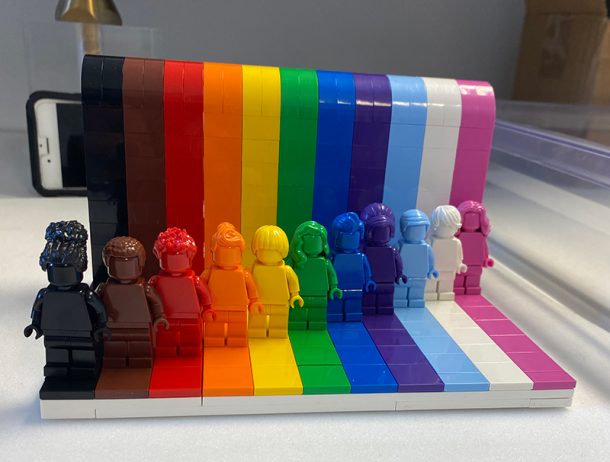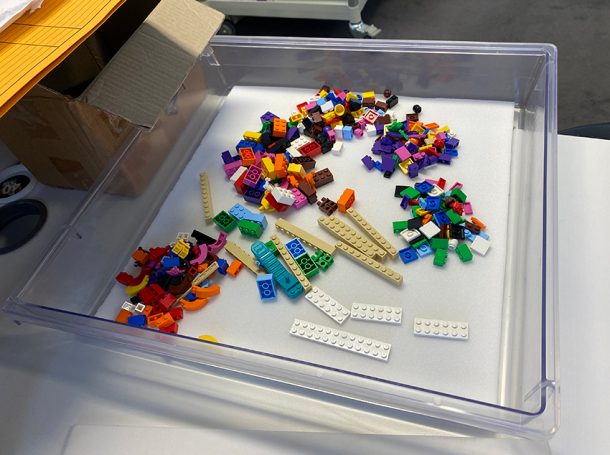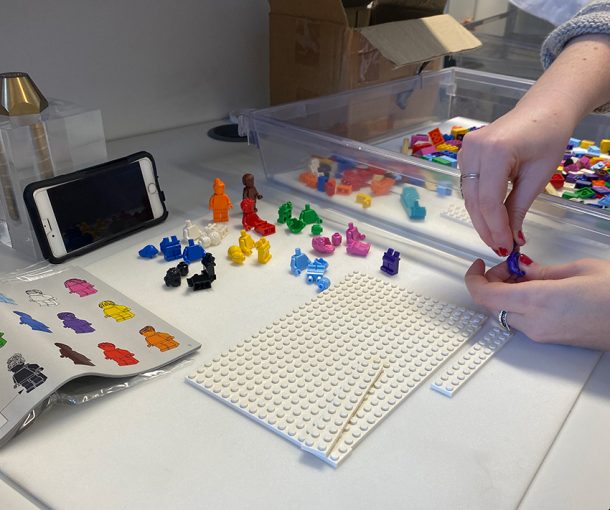I started a student placement in the Design and Digital section of the Art, Architecture, Photography and Design department at the V&A over summer 2022. Even though I knew the section looked after the Design 1900 – Now gallery and spearheaded the Rapid Response Collection, I wasn’t entirely sure what to expect. My days ended up being mix of meetings, collection management, visits to exhibitions and displays, and everything in between. It was a wonderful learning experience where I was able to work on projects that helped me gain skills ranging from object handling to researching for an exhibition.
One of my favourite and most unexpected projects that I helped with was an acquisition of a LEGO set called ‘Everyone Is Awesome’. It was designed to mark the occasion of LGBTQIA+ Pride celebrations in June 2021. A colleague from the museum gave the set on behalf of The LEGO Group and I had the opportunity to help prepare it for accessioning into the collection. This involved research on the set, paperwork, filling out the collections record, and lots of emails.

‘Everyone Is Awesome’ was designed by The LEGO Group’s Vice President of Design, Matthew Ashton. In creating the set, Ashton acknowledged the importance of representation in design, especially with an internationally recognisable company such as The LEGO Group. This LEGO set is an example of the ways in which representation intersects with design, especially in terms of gender and sexuality. ‘Everyone Is Awesome’ has eleven monochrome minifigures – small plastic representations of people, none of which have been assigned a gender. The idea was that this allows for all users of the set to see their genders represented. Ashton intentionally included the colours of the trans flag plus black and brown ‘to represent the broad diversity of everyone within the LGBTQIA+ community’.
In researching the set, I read a lot of reviews as I wanted to know what the user experience was like in putting the set together. Most reviews were excited about The LEGO Group’s choice to make an overt stand in support of LGBTQIA+ representation and were positive about the building experience. While I was more familiar with the excitement about feeling represented, I was less versed in understanding what made a LEGO set fun to put together. Rather embarrassingly, prior to this set, I had never built with LEGOs before so when reviewers spoke about the clever design and the fun minifigures I was a bit lost – that is to say, until I built the set myself.

One of the tasks involved with this acquisition was building the LEGO set for display. As I was putting the pieces together to form the minifigures and rainbow display stand, I began to understand why reviews were positive about the user experience of the set. Figuring out which pieces went where was like solving a puzzle and sorting the colourful plastic bricks into individual piles to do so was meditative. Being able to build ‘Everyone Is Awesome’ added another layer to the object’s meaning – the ways that people may have interacted with it are just as important as the visual weight that it supplies.

Putting ‘Everyone Is Awesome’ together for display was exciting because I saw the museum object materialise before my eyes but also because it helped me understand how multifaceted objects can be. Sometimes when you see an object on display behind glass it can be easy to see it as a purely visual thing. However, many museum objects on display were originally designed to be handled, used, or played with, as well as be admired. Building ‘Everyone Is Awesome’ was a lesson in how objects exist on many levels. This LEGO set serves as a reminder that visual representation matters but also that the interaction between objects and people matters too.


